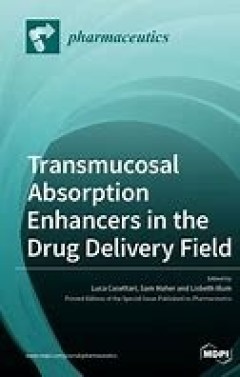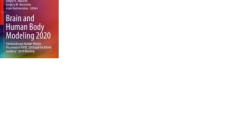Filter by

Nutraceuticals and the Skin: Roles in Health and Disease
he skin is the largest organ of the body and serves as a barrier between the inner and external environments. As such, any problems in the skin can have serious effects on systemic health and well-being. Several studies have established that both nutritional and dietary factors play an important role in the maintenance of normal skin integrity, and can execute a causative, preventative and/or t…
- Edition
- -
- ISBN/ISSN
- -
- Collation
- -
- Series Title
- -
- Call Number
- 610

Nutrients, Infectious and Inflammatory Diseases
Foodborne disease like salmonellosis and toxoplasmosis are amongst the most significant causes of hospitalization in the U.S. and globally. Gastrointestinal infections alter gut microbiomes and increase permeability to toxins. Various invasions by microbial, fungal, viral and parasitic agents stimulate inflammation, a defensive mechanism of the body’s immune system. Other stimuli include envi…
- Edition
- -
- ISBN/ISSN
- -
- Collation
- -
- Series Title
- -
- Call Number
- 610

Animals and the Shaping of Modern Medicine
This book breaks new ground by situating animals and their diseases at the very heart of modern medicine. In demonstrating their historical significance as subjects and shapers of medicine, it offers important insights into past animal lives, and reveals that what we think of as ‘human’ medicine was in fact deeply zoological. Each chapter analyses an important episode in which animals chang…
- Edition
- -
- ISBN/ISSN
- -
- Collation
- -
- Series Title
- -
- Call Number
- 610

Transmucosal Absorption Enhancers in the Drug Delivery Field
Development of strategies to assist the movement of poorly permeable molecules across biological barriers has long been the goal of drug delivery science. In the last three decades, there has been an exponential increase in advanced drug delivery systems that aim to address this issue. However, most proprietary delivery technologies that have progressed to clinical development are based on perm…
- Edition
- -
- ISBN/ISSN
- -
- Collation
- -
- Series Title
- -
- Call Number
- 610

Brain and Human Body Modeling
This open access book describes modern applications of computational human modeling in an effort to advance neurology, cancer treatment, and radio-frequency studies including regulatory, safety, and wireless communication fields. Readers working on any application that may expose human subjects to electromagnetic radiation will benefit from this book’s coverage of the latest models and techni…
- Edition
- -
- ISBN/ISSN
- -
- Collation
- -
- Series Title
- -
- Call Number
- 610

Medical Terminology for Healthcare Professions
Medical Terminology for Healthcare Professions is an Open Educational Resource (OER) that focuses on breaking down, pronouncing, and learning the meaning of medical terms within the context of anatomy and physiology. This resource is targeted for Healthcare Administration, Health Sciences, and Pre-Professional students.
- Edition
- -
- ISBN/ISSN
- -
- Collation
- -
- Series Title
- -
- Call Number
- 610

APEX Pre Calculus
This text was written as a prequel to the APEXCalculus series, a three–volume series on Calculus. This text is not intended to fully prepare students with all of the mathematical knowledge they need to tackle Calculus, rather it is de-signed to review mathematical concepts that are o[en stumbling blocks in the Calculus sequence. It starts basic and builds to more complex topics. This text is …
- Edition
- -
- ISBN/ISSN
- -
- Collation
- -
- Series Title
- -
- Call Number
- 500

Atomic Physics
Atomic physics is the field of physics that studies atoms as an isolated system of electrons and an atomic nucleus. It is primarily concerned with the arrangement of electrons around the nucleus and the processes by which these arrangements change. This comprises ions, neutral atoms and, unless otherwise stated, it can be assumed that the term atom includes ions. The term atomic physics can …
- Edition
- -
- ISBN/ISSN
- -
- Collation
- -
- Series Title
- -
- Call Number
- 500

The Meaning of Clinical Death
Clinical death is the medical term for cessation of blood circulation and breathing, the two necessary criteria to sustain human and many other organisms' lives. It occurs when the heart stops beating in a regular rhythm, a condition called cardiac arrest. The term is also sometimes used in resuscitation research. Stopped blood circulation has historically proven irreversible in most cases. …
- Edition
- -
- ISBN/ISSN
- -
- Collation
- -
- Series Title
- -
- Call Number
- 500

Cancer System Biology
Cancer systems biology encompasses the application of systems biology approaches to cancer research, in order to study the disease as a complex adaptive system with emerging properties at multiple biological scales. More explicitly, because cancer spans multiple biological, spatial and temporal scales, communication and feedback mechanisms across the scales create a highly complex dynamic syste…
- Edition
- -
- ISBN/ISSN
- -
- Collation
- 500
- Series Title
- -
- Call Number
- -
 Computer Science, Information & General Works
Computer Science, Information & General Works  Philosophy & Psychology
Philosophy & Psychology  Religion
Religion  Social Sciences
Social Sciences  Language
Language  Pure Science
Pure Science  Applied Sciences
Applied Sciences  Art & Recreation
Art & Recreation  Literature
Literature  History & Geography
History & Geography